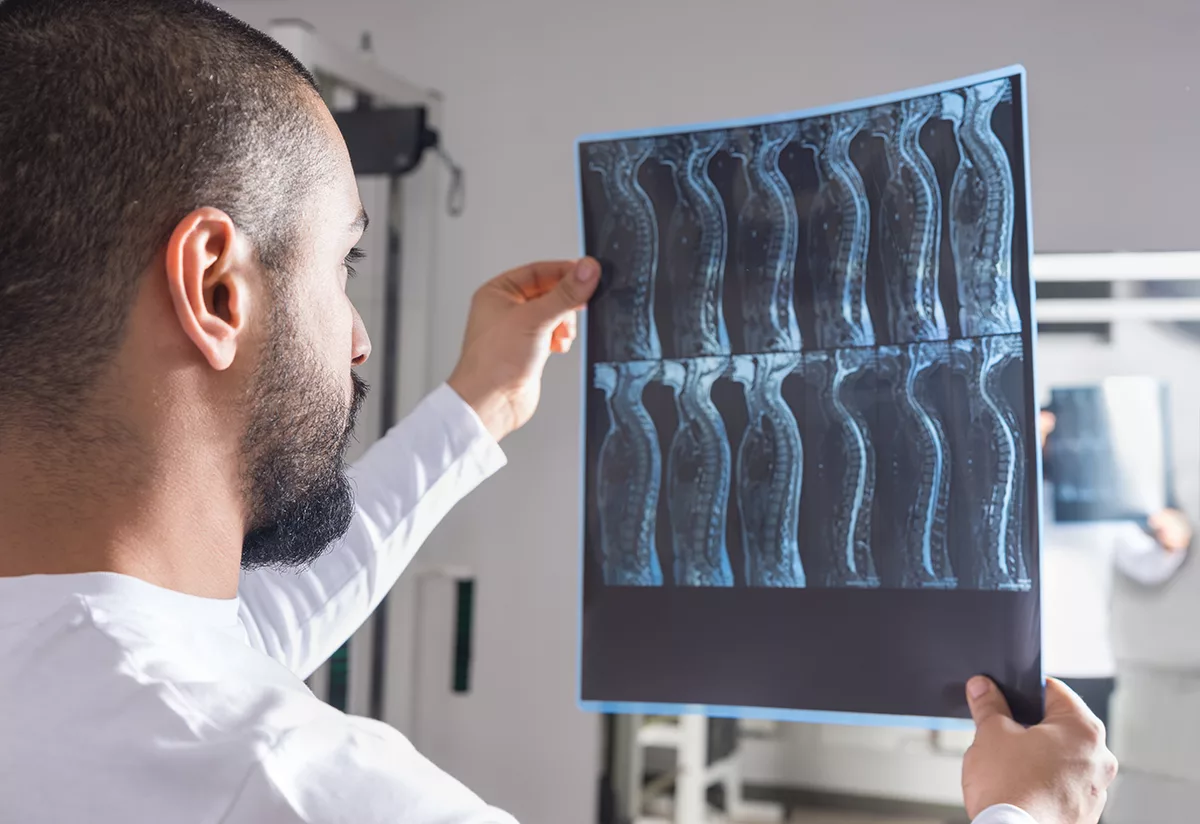September is Spinal Cord Injury Awareness Month

At Edison Spine Center, we’ve seen many spinal cord injuries due to our work as expert witnesses and independent medical examiners. A spinal cord injury can be a life-altering event, resulting in long-term pain, disability or even paralysis.
Spinal cord injuries are rare but can happen to anyone. They are most often caused by a traumatic event such as a car accident or a fall, but can also result from a chronic condition such as:
- Arthritis
- Cancer
- Chronic inflammation
- Degenerative disc disease
- Infection
September is Spinal Cord Injury Awareness Month, the perfect time to get educated on what a spinal cord injury is, how it can happen and what can be done about it.
Spinal Cord Injury Symptoms
Symptoms of a spinal cord injury depend upon the part of the spinal cord affected. The spinal cord is the body’s main nerve center. It transmits messages between the brain and the rest of the body. The different regions of the spine control different parts of the body.
- Cervical spine: Nerves that control the head, neck, arms and diaphragm branch from the cervical spinal cord
- Thoracic spine: These nerve roots control muscles in the chest and back, as well as enervate parts of the abdomen
- Lumbar spine: The lumbar spine nerve roots control the lower back, lower abdomen and parts of the legs
- Sacral spine: Nerves branching from the sacral spine control parts of the legs and the genitals
An injury to the cervical spine, for example, may affect breathing or the use of the arms. An injury to the lumbar spine may prevent walking.
Spinal Cord Injury Classifications
Spinal cord injuries are classified in a number of ways. The first is whether the injury is complete or incomplete. An incomplete injury means that nerve transmission to and from the brain is not completely interrupted. Someone with an incomplete spinal cord injury will likely maintain function below the level of the injury.
A complete injury is one in which the spinal cord retains no ability to transmit nerve signals. There will be no function below the level of the injury. If a patient has an injury to the cervical spine, for example, he or she will be immobilized from the neck down.
Another differentiation is whether the injury causes paraplegia or quadriplegia. Quadriplegia means the partial or total loss of movement and sensation in all four limbs, whereas paraplegia is the loss of movement or sensation in the legs. The location of the injury determines whether the patient will have paraplegia, quadriplegia or neither.
Spinal Cord Injury Treatment and Recovery
Recovery from a spinal cord injury will depend on the location and severity of the injury. Generally, it is not possible to recover from a complete injury. People with incomplete injuries may have some movement, sensation or function return.
Spinal cord injuries need immediate emergency and possibly life-saving treatment. After emergency triage, treatment is aimed at preserving the integrity of the limbs. Stretching the muscles and putting the joints through their range of motion will help slow atrophy and degeneration.
People with quadriplegic injuries are at increased risk of other complications, such as:
- Pressure ulcers (bed sores)
- Pneumonia
- Blood clots
Long-term treatment for people with quadriplegia will be focused on preventing such complications.
If you or someone you know has sustained a spinal cord injury, request an appointment at Edison Spine Center. With more than 50 years of combined experience, our spine experts can tell you what to expect and take steps to increase your quality of life.
